I've always loved this living room trend that makes small spaces more welcoming, comfy and relaxed
Floor seating has been an Eastern staple for centuries, and is now a Western interior design trend now too. It doesn't just look good but is good for your body as well


My old apartment wasn't big. At just 250 square feet there was room to host friends, but only with some clever design tricks. Yet when I did have friends over they commented on how the space felt airy, more open, welcoming even. And I always managed to accommodate more people than you'd imagine.
And the trick isn't a new idea at all. It is one that has been passed down in Asian cultures for centuries, yet largely ignored as a Western interior design trend. It was about floor seating. About not having a couch and instead laying out floor pillows, a daybed, an ottoman. This was a natural order for me, as being Indian, I was always used to seeing at least one close-to-floor piece in most households back home.
Floor seating has a lot to offer, in terms of aesthetics, space-boosting benefits, and even health. In fact, when it comes to living room furniture this seating arrangement has been gaining a lot of love and popularity recently. Intrigued? Here's more.

Aditi is an experienced homes writer and editor. She has written hundreds of articles for various international titles helping readers make the best home design choices, and spends her days interviewing interiors industry experts to bring the latest ideas to her readers. For this piece she writes about the culture of floor seating in Asia and how it's making a comeback in a modern way.
Where does the concept of sitting on the floor originate from?

Asians like the Japanese, Indian, Chinese, and Koreans harbor a connection with the ground – it is where life begins and ends. Even today, although not as prevalent, in some traditional homes, the practices of sleeping, dining and even lounging are done on the floor [the tradition also prevails in the Eurasian hinterland of Turkey].
This isn't a new living room trend. 'Traditional low seating in India dates back to the 6th century,' says Meera Pyarelal, the Mumbai-based founder and interior designer at Temple Town. 'It came into being as a natural way of eating. In fact, this also influenced the architecture of homes with more polished and smooth floors where one could place mats and throw pillows.'
'Over the years this form of seating has undergone many changes, based on versatility and aesthetic,' says Meera. 'The most popular form being the baithak. It is now designed on a slightly raised platform decorated with pillows and bolsters, much like a daybed, ideal for a cozy living room. The charpai literally translates into four legs. The portable, rope-made structure of the charpai makes it a versatile staple for sleeping, and seating and it can be stacked away when not in use.'
Interestingly, sitting on the floor isn't only wrapped in cultural or religious beliefs; it is also rooted in well-being, health, science, and even practicality.
The Livingetc newsletters are your inside source for what’s shaping interiors now - and what’s next. Discover trend forecasts, smart style ideas, and curated shopping inspiration that brings design to life. Subscribe today and stay ahead of the curve.
Is floor seating beneficial for you?
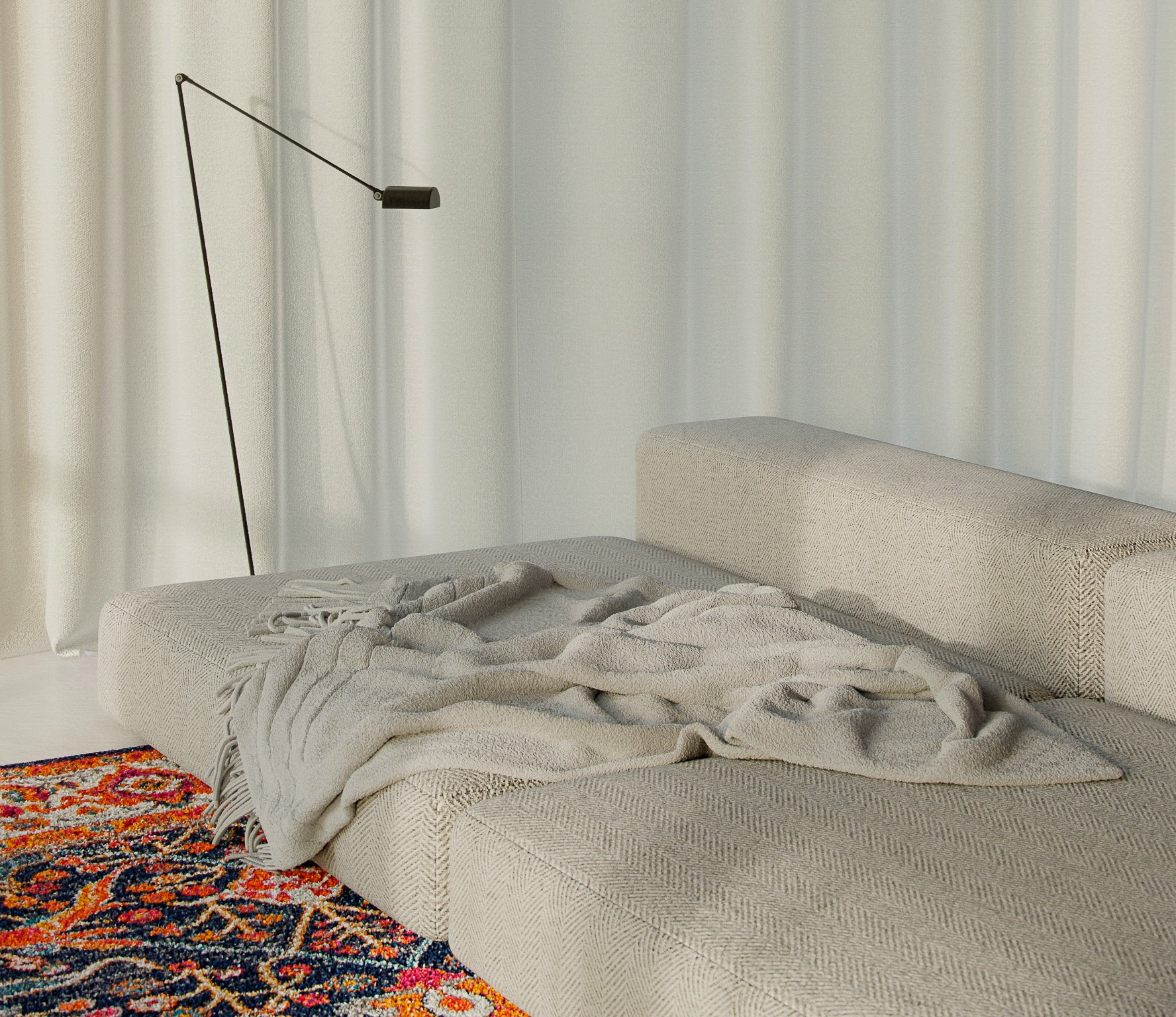
Yes, sitting on the floor is healthy and aesthetically functional. Take China or India for instance, where the tradition of large or joint families living together was pretty common (and in some smaller towns, it still is). The 'floor culture' allowed the accommodation of a lot more people in the house or a room.
In Japan, where earthquakes and tsunamis were common, having couch alternatives and fewer pieces of furniture made it quicker and safer to escape. Plus sitting on the floor warns you faster about the shaking ground.
Sitting on the floor crossed-legged helps improve digestion, and the slightly bent posture towards the front aids the abdominal muscles to digest faster. The cross-legged position betters blood circulation and releases tension in the body. Added to this, sitting on the floor is said to have a lot of psychological and emotional benefits. Remember how relaxed you felt at the end of your last yoga class during the cool-down? Didn't you want to lie down on the ground and never get up?
Plus, in small apartment living rooms, low-floor seating can visually alter the dimensions of the room (as I learned while at my old apartment!), making the room feel taller, and laying the grounds for an elegant living room that has a lot more to offer.
'Low-level furniture can make a room with average ceilings feel gorgeously tall,' says Japanese-origin, New York-based interior designer Jarret Yoshida. 'When we scale furniture low, it makes the room's architecture go from standard to luxurious in a heartbeat. The distance between the ceiling and furniture is higher with low furniture which makes the room volume feel spacious. Low furniture is also evocative of contemporary high-end Italian styles and traditional Japanese lines; the guiding stars in the interior design world.'
Types of low or floor seating
Traditionally, the Japanese are known to sit on tatami mats with shikibuton or zabuton pillows, while dining on a kotatsu table. Indians usually have a diwan, a gadda or a charpai that make for close-to-floor or ground seating. Today, world over as people and interior designers are warming up to floor culture, several modern iterations of these traditional seats, perfect for living rooms, bedrooms to family rooms have taken over the market.
1. Low sofas or loungers
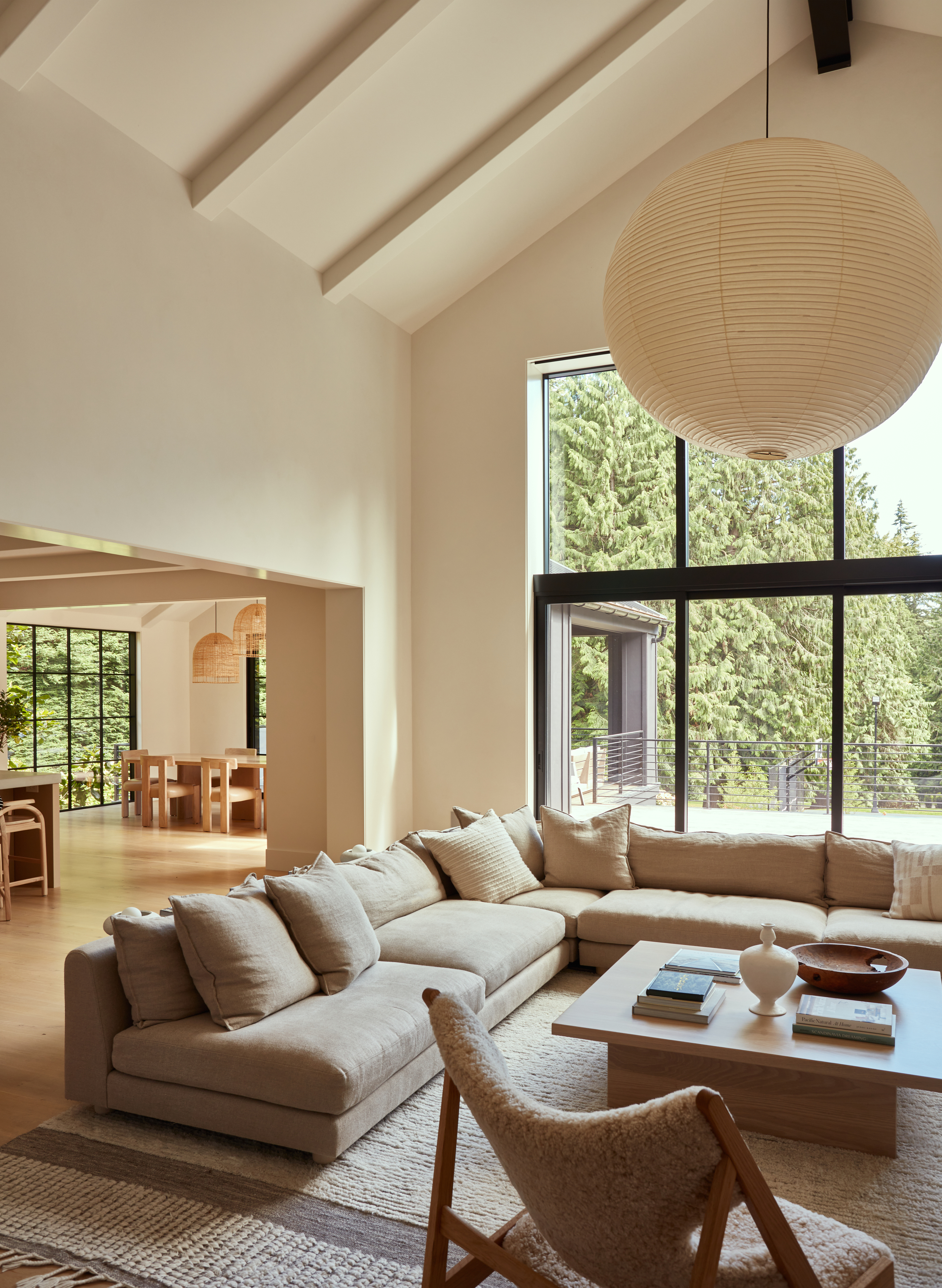
If you have a small apartment living room and are looking for one-size-fits-all furniture, then a low-profile seater can be just the thing, as it will act as a multipurpose piece. You can choose from a single, close-to-ground seater to a long, continuous couch, or an L-shaped sofa that has a low profile.
Even certain lounge chairs are available in long, wavy forms that make you feel as if you're stretched out on the ground but still raised above.
This piece will also make the room look taller and more voluminous. Plus, since only one major piece is going to take over your space, you can make it a pop-colored, or pattered piece; the focal point of your living room.
'Low sofas have the bonus of feeling a bit more like a gorgeous daybed to laze around on,' says Jarret. 'Low sofas have more depth and coziness to them. This is the sofa made for watching movies, eating warmed brownies and ice cream, and a great cuddle up with your cat, human, or dog.'
2. Floor pillows, ottomans and poufs
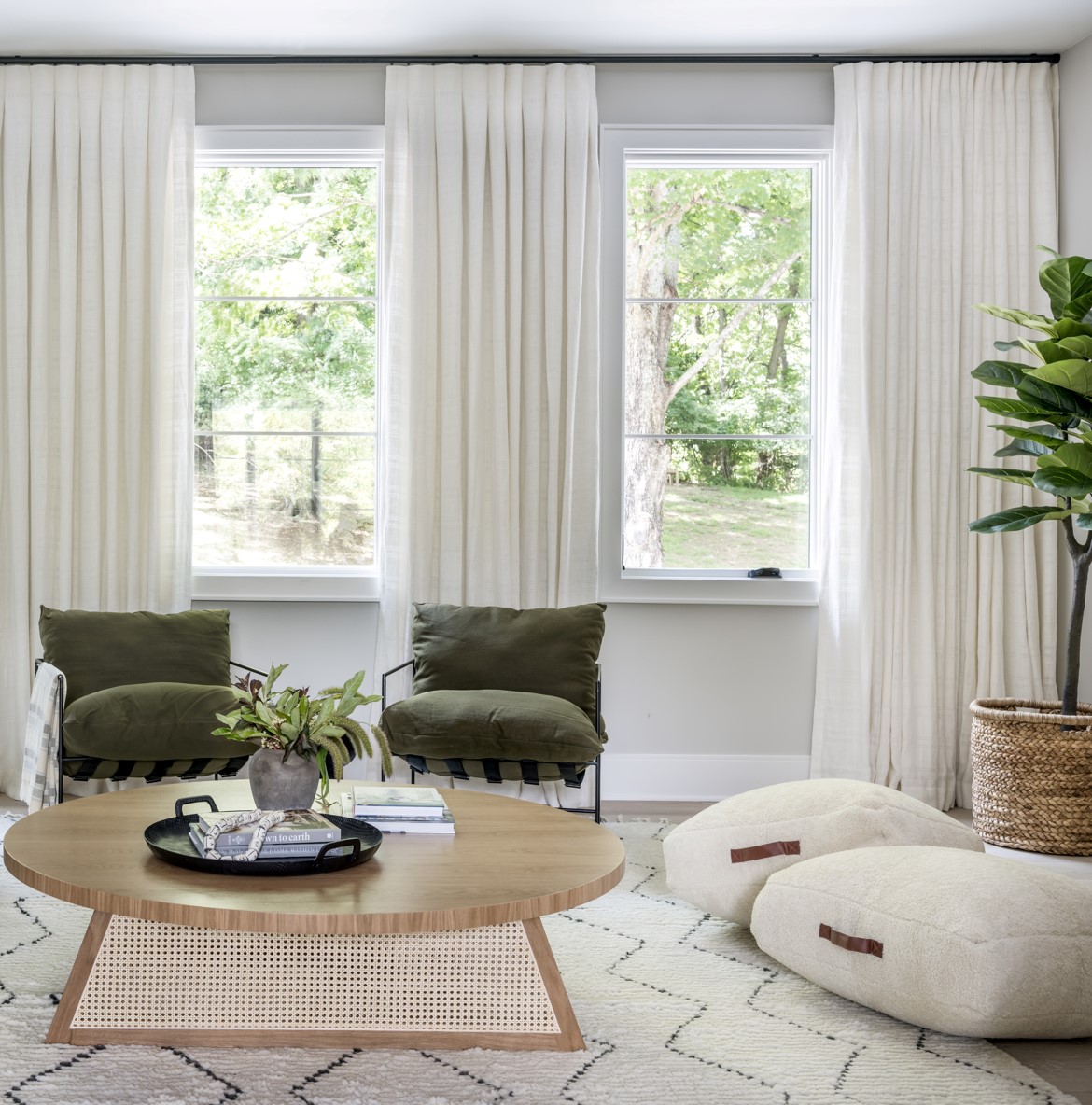
If you're redesigning a modern living room, and like the idea of floor seating then great contenders for the same are pillows, ottomans, and poufs, that help pepper the living room or bedroom setup with added functionality. Even tufted fabrics such as corduroy and wool can make for great stacking options that can create an on-floor seating space.
The market is full of a wide variety of poufs and pillows for a living room, available in a variety of colors and shapes such as circular, rectangular, or spherical. Plus, these give you an easy way to add extra seating without the need for more, bulky chairs.
Many of these can work as a footrest, low stool, or even a storage space to keep pillows, throws, and other knick-knacks. A large ottoman can double as a coffee table, and be used in other parts of the home.
3. Floor beds
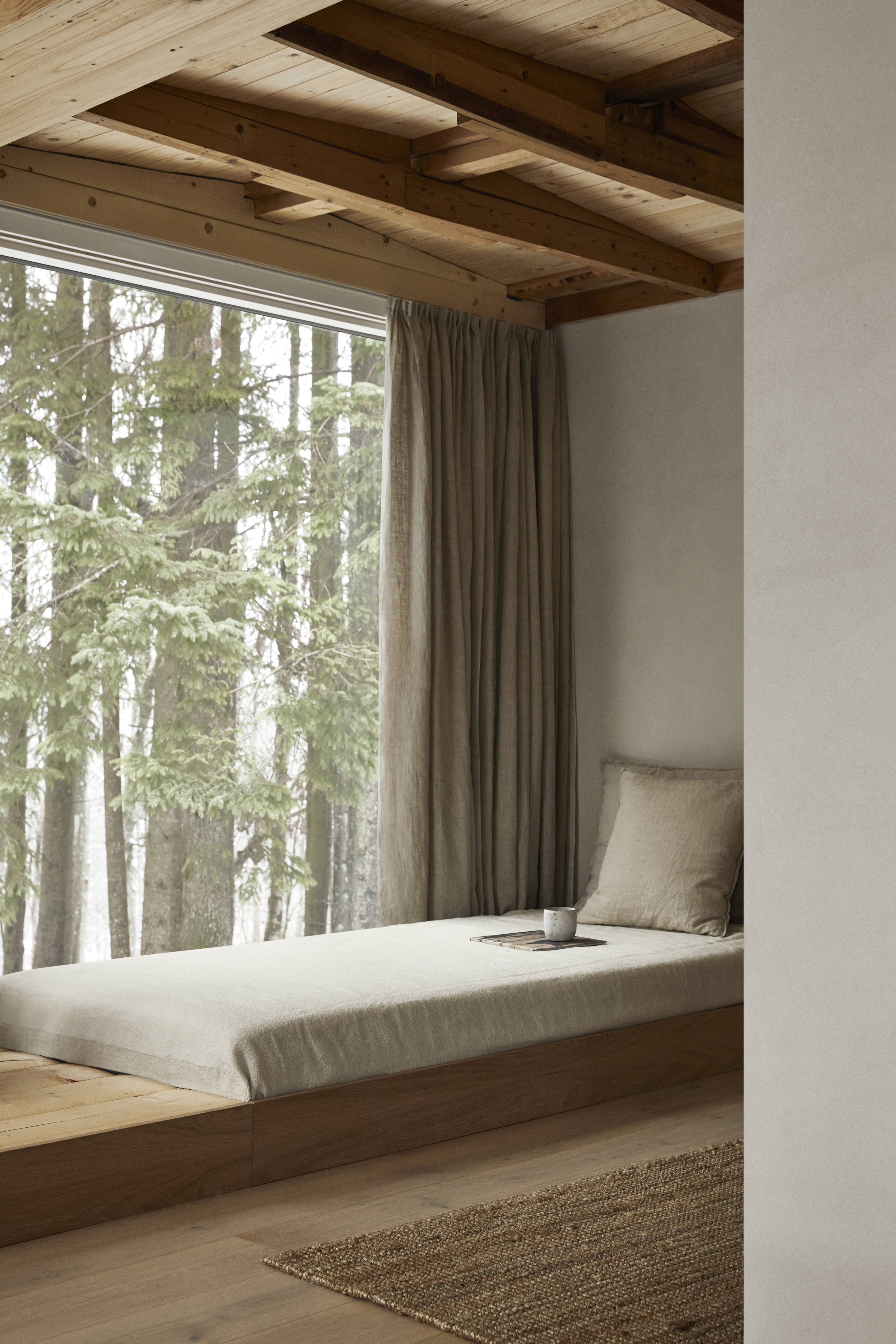
Low beds or floor beds are famously associated with Japanese and Indian design and are now beginning to catch on in modern design circles as well. These are especially useful in warm regions where the ground cools down the mattress and the bed, ensuring better sleep. It is believed that people who sleep on a mattress directly on the floor have a lower risk of scoliosis.
In small bedroom layouts, the floor bed can help you gain a sense of spaciousness with its low-profile look.
There are several designs to experiment with if this idea appeals to you. A high-density foam mattress could do the job for you. Even a daybed that's close to the floor could be used as a bed. If you have a built-in platform in the room, use it as a bed frame and place a mattress on top.
How do I design a floor seating arrangement?
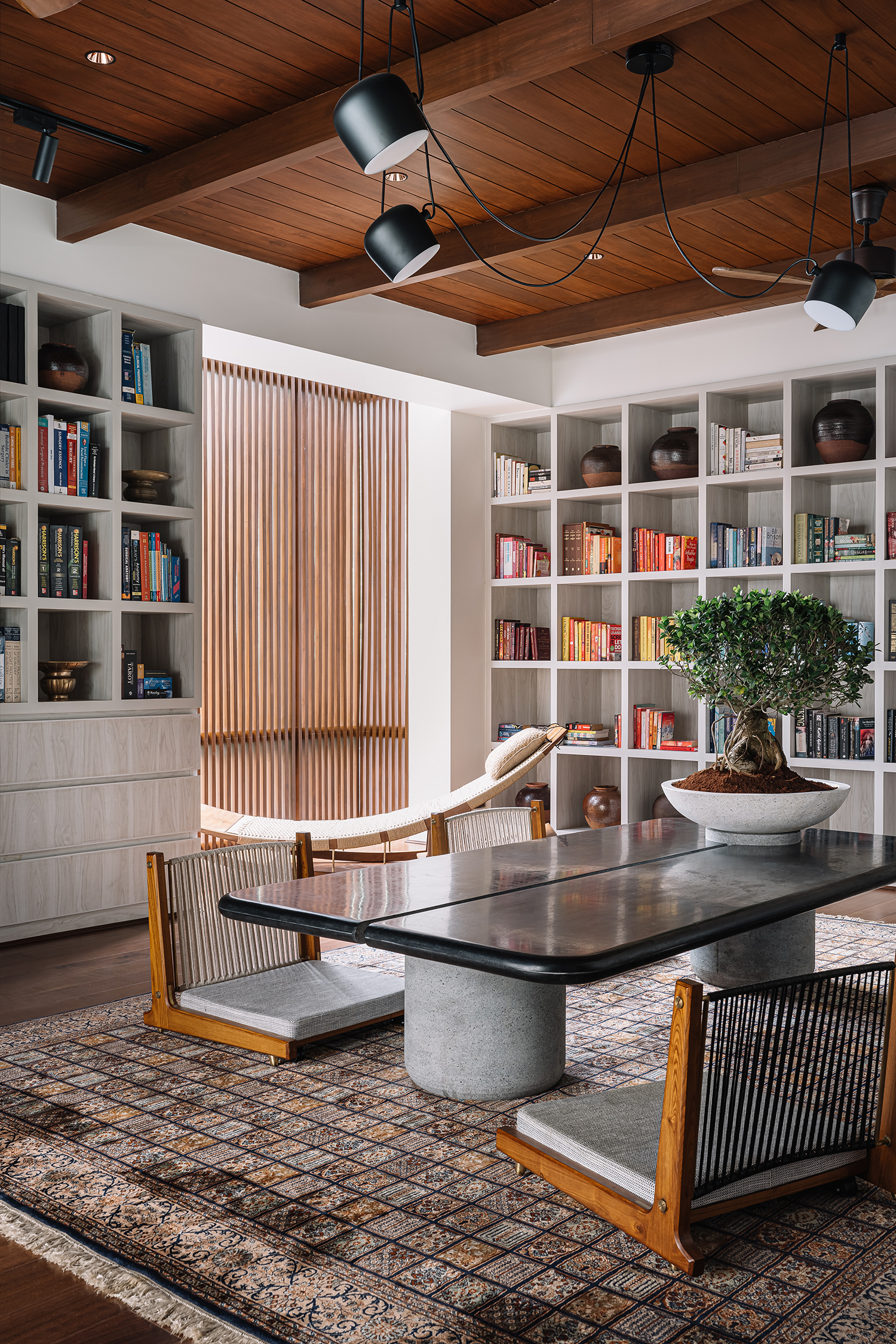
In several, fun ways! If you want to go all-out in your floor seating, consider bringing in one close-to-ground sofa, and complementing it with floor cushions, long daybeds, and low chairs. Want to add a little richness to the setup? Add a fur comforter and some bright-colored cushions to go with it. 'Make sure that when you have a low sofa, you must have a low coffee table as well,' says Jarret. 'Coffee tables should ideally be a few inches below the sofa seat height.'
For a modern take on traditional Asian seating in your small dining room, choose floor chairs like in this project by Studio Context. These look modern yet have a throwback quality to them.
You could also consider doing a hybrid seating where you complement your classic sofa or sectional with floor seaters such as ottomans, poufs, and loungers. Or create a fun living room corner with a futon, dress it up in bright fabrics, and place a lamp for a cozy, private vignette. Don't forget to add a rug underneath, and plants to complete the setup.
This floor chair is suitable for the living room, bay window or balcony, and can be used for lounging, studying, watching TV or even dining. It is also a great meditation chair.

Aditi Sharma Maheshwari started her career at The Address (The Times of India), a tabloid on interiors and art. She wrote profiles of Indian artists, designers, and architects, and covered inspiring houses and commercial properties. After four years, she moved to ELLE DECOR as a senior features writer, where she contributed to the magazine and website, and also worked alongside the events team on India Design ID — the brand’s 10-day, annual design show. She wrote across topics: from designer interviews, and house tours, to new product launches, shopping pages, and reviews. After three years, she was hired as the senior editor at Houzz. The website content focused on practical advice on decorating the home and making design feel more approachable. She created fresh series on budget buys, design hacks, and DIYs, all backed with expert advice. Equipped with sizable knowledge of the industry and with a good network, she moved to Architectural Digest (Conde Nast) as the digital editor. The publication's focus was on high-end design, and her content highlighted A-listers, starchitects, and high-concept products, all customized for an audience that loves and invests in luxury. After a two-year stint, she moved to the UK and was hired at Livingetc as a design editor. She now freelances for a variety of interiors publications.



